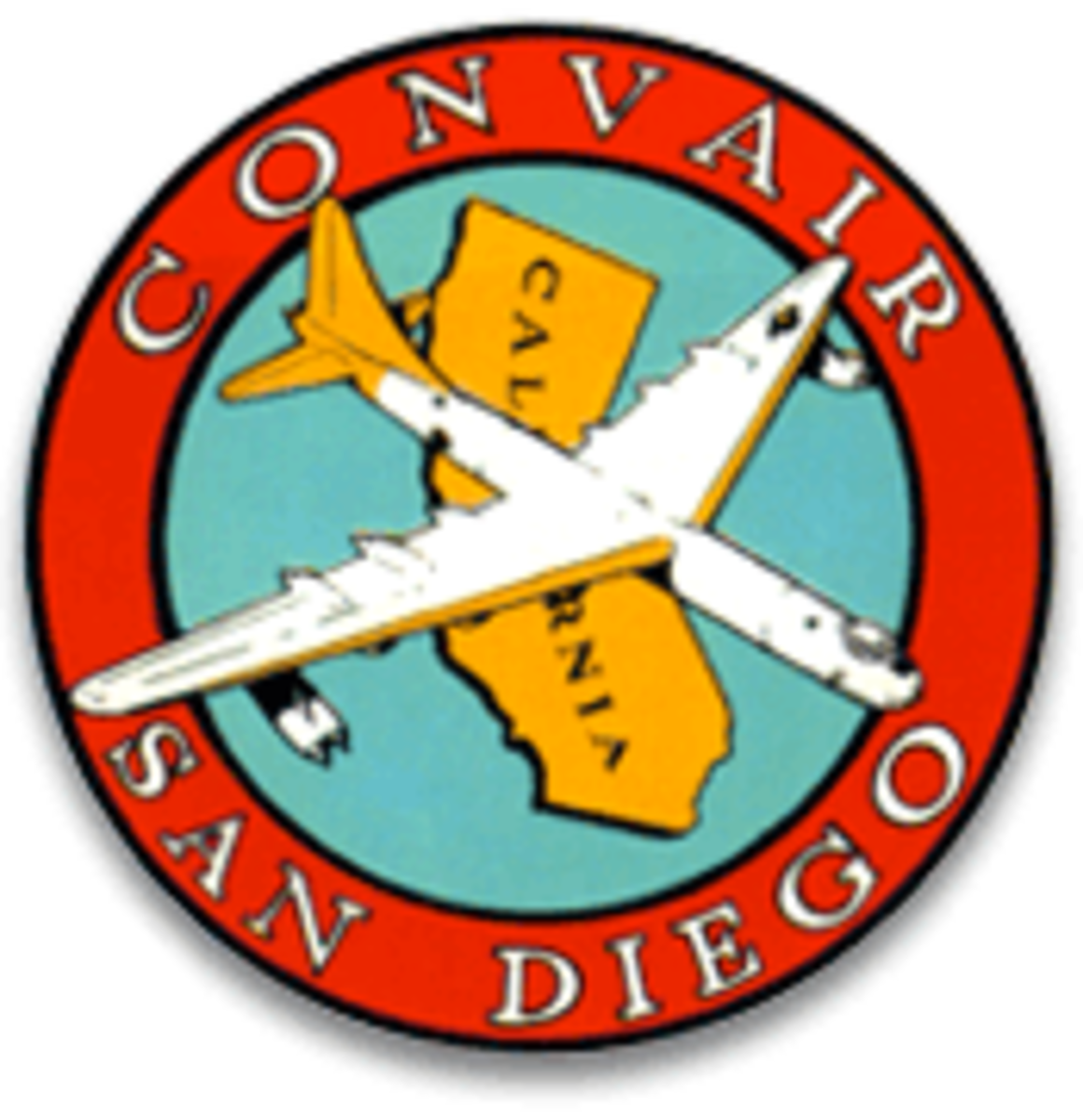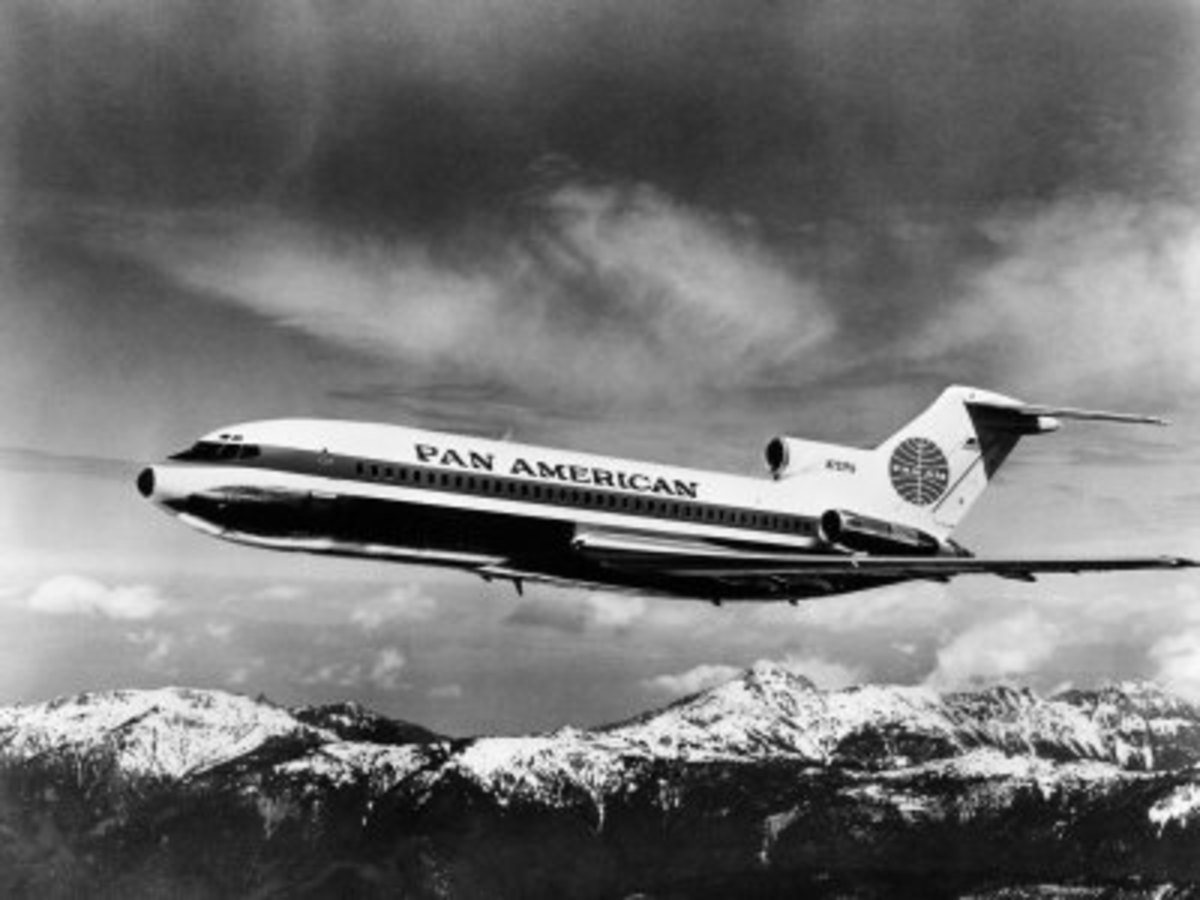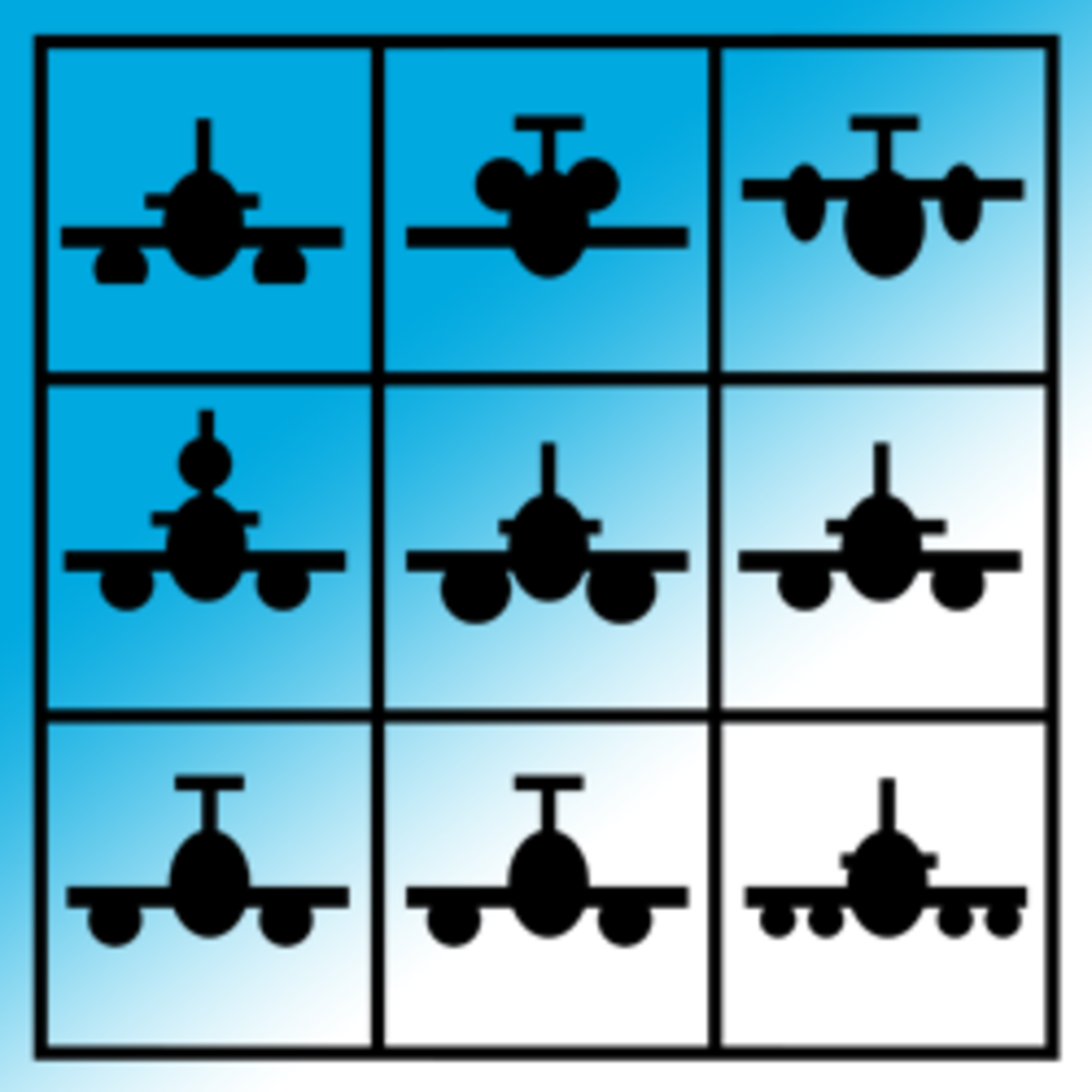America's Big Stick: The Convair B-36
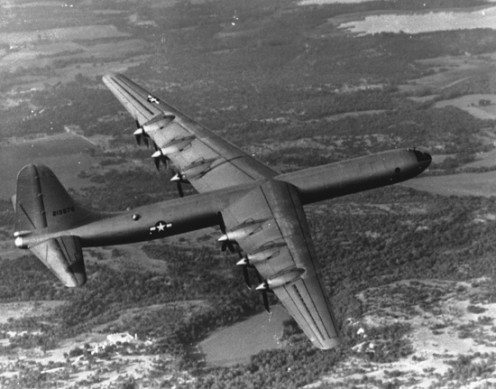
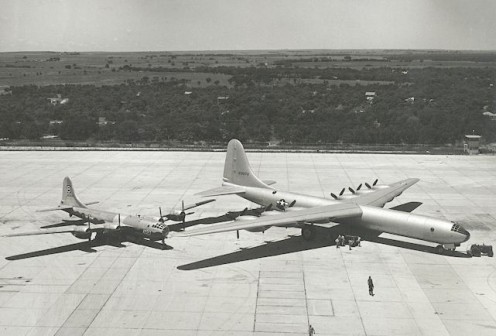
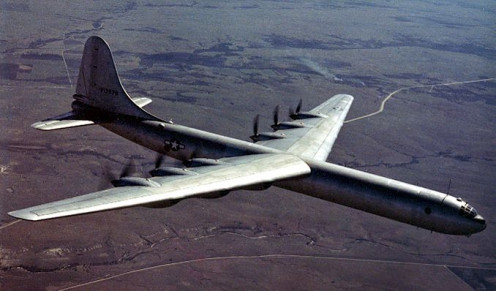
She was the largest piston-engined aircraft ever mass-produced. She carried a crew of 15, sported 12 20mm cannons in 6 remote-controlled retractable turrets and 4 more in fixed nose and tail positions, carried 86,000 pounds of bombs (more than 10 times that of the legendary B-17 Flying Fortress of WWII). She could also carry the Mk-17 hydrogen bomb, and until the appearance of the B-52, was the only one that could.
She was powered by 6 propeller engines reverse-mounted in a pusher arrangement and 4 turbojet engines on her enormous 230-foot wingspan to altitudes of over 40,000 feet and a top speed of 418 MPH.
In her 10 years of service, she was the Strategic Air Command's largest intercontinental nuclear bomber. She never dropped a bomb or fired a shot in anger...she didn't have to, just her constant presence in the skies was enough to keep our enemies at home and the cold war cold.
Maybe that's why they called her "The Peacemaker."
First, A Little History
It was 1941, Hitler's Germany was running amuck all over Europe: Poland, France, The Netherlands all had fallen and England was in a fight for survival.
Here in the U.S., the Roosevelt administration was looking at the very real possibility of having to face both the Nazi juggernaut AND Japanese aggression alone.
Most military strategists (including Japan's Yamamoto) knew Japan, with precious few natural resources and almost totally dependent upon imports of fuel and steel, while presenting a real threat, would never be able to sustain any real momentum. The resources obtained from their conquests to date would take time to develop and incorporate into their war effort, and most did not believe Japan had any serious plans for attacking the U.S. in the near future, at any rate.
Yamamoto had told his superiors when planning the attack on Pearl Harbor, " I will run wild for six months. After which, I can guarantee nothing." A statement unknown to the west in 1941, but confirmation of the conventional wisdom of the time
It didn't take a genius to figure out that once England fell, it wouldn't be long before America was in Hitler's gunsights. Intelligence indicated the Nazis were actively planning to attack the North American Continent once England was out of the way.
They were developing intercontinental bombers and what was at the time the largest transport aircraft ever built.
The German Navy was also expanding: Bismark was just the first of Germany's Super-Battleships to launch, there were more planned. The firepower these ships could bring to bear for coastal bombardment was truly frightening. The U-boat fleet was growing daily and larger, more capable boats were in the offing, making what was already the most formidable threat to shipping nearly invincible.
But the two most frightening prospects of war with Germany were reports of planned aircraft carriers....and an atomic bomb project.
If England fell in 1941, as some analysts believed she would, Germany could be ready to strike the United States by late 1943 or early 1944.
Little wonder then that, contrary to most conspiracy theorists, the Roosevelt Administration was pursuing policies designed to take America to war in Europe while maintaining a policy of containment against Japan in the Pacific.
In their eyes, while Japan was a formidable force, Germany was the ultimate threat to America, and America was woefully unprepared to meet that threat.
Beginnings
With things as they appeared in early 1941, the US Army Air Corp (USAAC) issued it's original specs for what would ultimately become the B-36.
The Air Corp needed a bomber that could reach Germany or Japan from bases in the Continental United States. To that end, the original specs called for a 275 mph cruising speed, a service ceiling of 45,000 feet, and a maximum range of 12,000 miles.
These specs, however, proved to be beyond the capabilities of existing technology and the USAAC reduced their requirements in August 1941 to a 10,000-mile range, ceiling of 40,000 feet, and cruising speed of between 240 and 300 mph.
Boeing and Consolidated (Consolidated-Vultee, or Convair after 1943) were the only contractors to respond. Consolidated won the brief design competition and was given a development contract in October 1941 for the XB-36.
Consolidated agreed to complete the first prototype within 30 months with the second six months later. This timetable was soon disrupted by the US entry into the war.
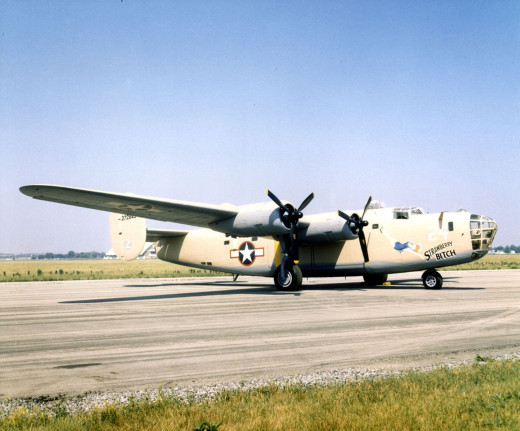
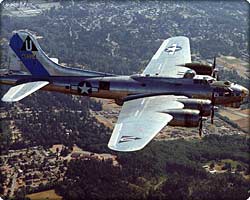
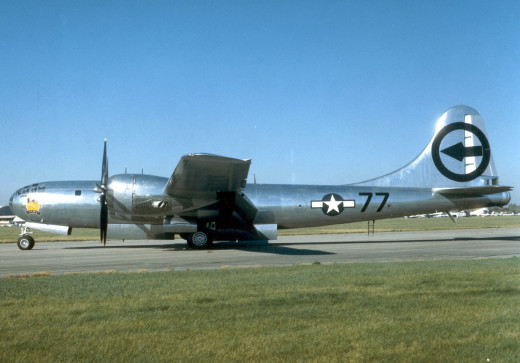
Pearl Harbor And WWII
After the Japanese attack on Pearl Harbor, Consolidated was ordered to slow work on the XB-36 to concentrate on its B-24 Liberator production.
Additionally, though the initial mockup was completed in August 1942, Consolidated shifted its production from San Diego to the Ft. Worth, Tx plant, further slowing the project.
The program began to regain some momentum in 1943 as the US Army Air Forces increasingly required long range bombers for the campaigns in the Pacific. This led to an order for 100 aircraft before the prototype had been completed or tested.
Of course, it would be the Boeing B-29 Superfortress that would ultimately lead the strategic bombing campaign in the Pacific.
What designers and engineers at Convair came up with was a mammoth aircraft that by far dwarfed anything the USAAF had at the time: it had a massive 230 foot wingspan that allowed the bomber to reach a maximum altitude far and above most fighters and anti-aircraft artillery of the day.
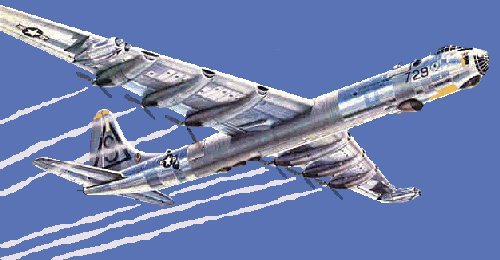
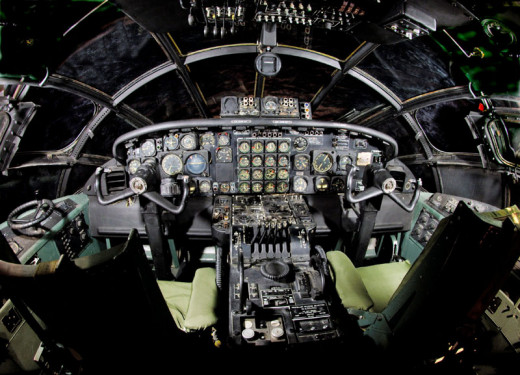
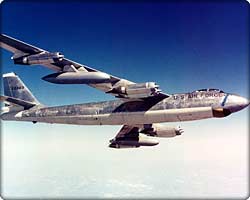
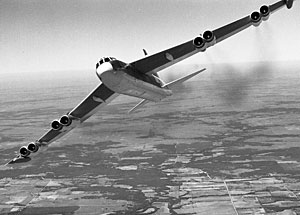
"Six Turnin', Four Burnin'"
The aircraft was designed for a maximum bomb load of 86,000 pounds in cavernous internal bomb bays, for defensive armament she carried 20 mm cannons rather than the previous standard of .50 cal machine guns in six remote controlled turrets and two fixed turrets (nose and tail).
She had a crew of fifteen in a pressurized flight deck and crew compartment, the two connected by a tunnel, a galley and six bunks (to accommodate crew rest on long missions).
The pusher arrangement of the six engines, while making for a more efficient wing, caused problems with engine overheating, and the original single-tire tricycle landing gear arrangement (known as "runway breakers") which strictly limited it to certain airfields were among the problems that had to be overcome before the first XB-36 lifted off the runway for its first flight on August 8, 1946.
The landing gear problem was corrected by replacing the "runway breakers" with four-tire trucks on the main gear, spreading the 171,035 pound empty weight over a larger area.
Though she would remain known for engine fires, improved cooling air ducting reduced the problem of overheating.
By the time the B-36 entered service in 1949, she was largely obsolete, being a pre-war design. She was, however, the only plane that could carry the nuclear weapons of the day and meet the Strategic Air Command's (SAC) requirements for an intercontinental bomber.
The Boeing B-47 Stratojet had flown two years earlier and the B-52 Stratofortress was already in development, signalling a short career for Convair's behemoth.
Further shortening the B-36's career were jets such as the Soviet MiG-15 and the advent of Surface-to-Air Missiles (SAM's).
Still, the B-36 was the backbone of SAC's nuclear bomber force and was continually refined and modified in service. Beginning with the B-36D, four General Electric J47-19 engines were added on outboard wing pylons adding to the aircraft's top speed and shortening takeoff roll. Fuel consumption, however limited use of the jets to takeoff and high-speed attack runs.
The addition of the jets gave rise to the phrase "six turnin' and four burnin," to indicate all six propeller engines and all four jets were running.
21 B-36A's were reconfigured to RB-36E for photo reconnaissance missions and remained in service until 1959.
The aforementioned SAM's led planners to the conclusion the B-36's guns were obsolete resulting in their removal beginning in 1954 as part of a series of "featherweight" modifications to lighten the plane's overall weight.
The final model, and ultimate B-36 was the "J" model which incorporated all the refinements and upgrades the type could handle.
Throughout the Peacemaker's service life, SAC Commander Gen. Curtis LeMay drilled the aircraft and crews relentlessly, the planes were constantly in the air on airborne alerts and subject to alert scrambles.
The missions were long, tiresome and grueling. At times, they could be dangerous: engine fires were common and there were crashes.
Maintenance crews were taxed to their limits: It was a very labor-intensive aircraft that was often criticized as an expensive blunder due to its maintenance record.
By 1959, the B-36 was finished with the USAF. The B-52 and B-47 took over the strategic bombing role.
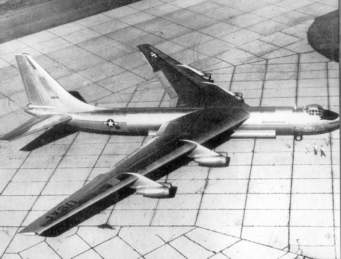
The YB-60
In an effort to keep production lines going, and compete with the B-52, Convair developed the YB-60, a swept-wing eight-engine bomber based on the B-36.
It had more than a 70% commonality with the B-36, including the fuselage.
First flown in April, 1952, it was cancelled in August of that year due to the B-52's obvious superiority.
Convair would instead concentrate on its delta-wing F-102, F-106 and B-58 aircraft....but that's another story.
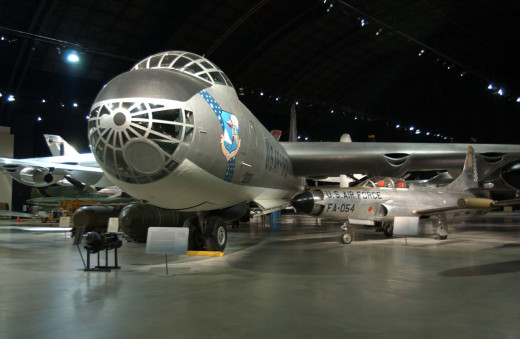
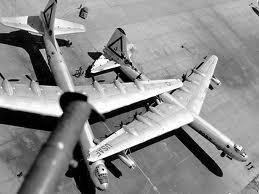
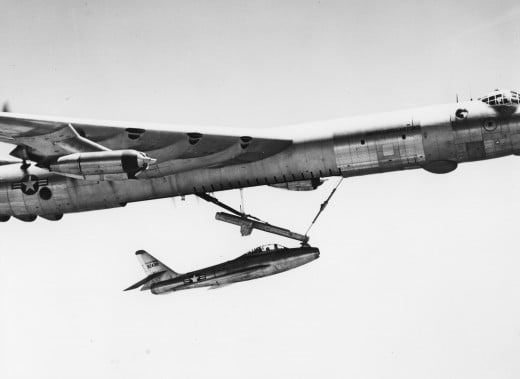
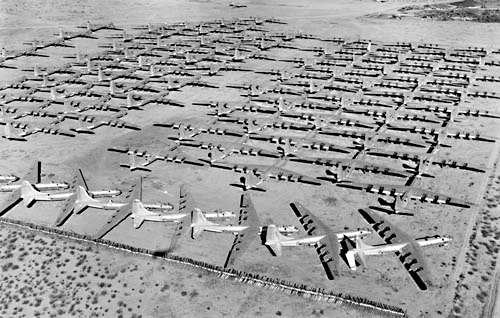
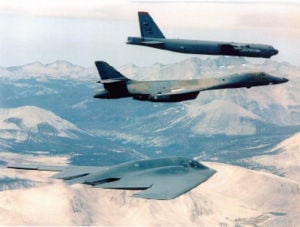
Reflections
Today, there only four B-36's left in the world to my knowledge, all in museums, none flyable.
I had a couple of privileges concerning the type: I visited the National Museum of the US Air Force in Dayton, Ohio and got good up-close look at their Peacemaker. God, it's massive. Your first thought is: "Holy crap! How did they get this thing off the ground?"
I also got to know a former B-36 pilot and a former B-36 crew chief. Both men had their own perspective on the airplane.
Retired Air Force Lt. Col. Ralph Studdard flew the "J" model for two years before transitioning to the B-47. He used to say that it was a handful to hold onto until you got her up to altitude. From there, he told me, the flight smoothed out.
"You had to understand you were gonna fly the plane's flight profile, not yours. It was no damn fighter...you didn't do much maneuvering, it was just too damn big. You try a bunch of evasive stuff, you'd lose the airplane. It was designed to get up high, fly straight and true to the target, make a traditional bomb run and come home."
Like many B-36 aircrews, he had an experience with an engine fire. His number five engine caught fire out over the water. he said, "We hit the fire bottle, shut it down and feathered the prop. The bird would fly fine with one engine out, but you could feel it pull toward that side, so we did an air-start on the jets, adjusted the throttles till the plane felt right, declared an IFE (Inflight Emergency) and set it down at Thule, Greenland a couple hours later." Despite the emergency, he said the plane did well and there were no other problems, but he told me, "My FE (Flight Engineer) was glued to that panel."
He also once blew a main landing gear tire landing, again, at Thule. "It was rough," he said.
A retired Air Force Chief Master Sgt I knew served as a crew chief on the type his first four years in the service and didn't have much fondness for the Peacemaker:
"For every hour that $#% thing flew, you were gonna work your ass off for three. I honestly hated to see that sonuvabitch of mine land, 'cause I knew what was comin'...I was gonna be turnin' wrenches and swingin' hammers all @#%#% night long. There wasn't a hangar built the #$%$ thing could fit in to, so we were out in the weather all the damn time and I was in North Dakota. Believe me, I was happy to see a set of orders outta there."
Both men have since passed away.
My late father worked at Consolidated's Ft. Worth plant as an electrician on the B-24 production line from 1942 til 1945, when they shifted him to the XB-36 project. He left Convair shortly after the first prototype's flight in 1946.
I still get tickled remembering him talk about wiring "that damn big sumbitch."
He used to say you'd get a mile of wiring routed, then they'd change their minds and you'd have to pull every bit of it out and start all over again.
The B-36 was featured in the classic 1955 motion picture, "Strategic Air Command" starring James Stewart, an Air Force Reserve officer and B-36 pilot, and June Allyson.
Had priorities been different in late 1941 and early 1942, the B-36 might have been known as the bomber that won WWII.
Instead, it was already behind the times by the time it entered service. Even so, she gave magnificent service throughout her career.
She bought the Air Force valuable time to bring newer, better systems to bear in the early days of the cold war.
Though she never fired a shot in anger, she kept the Soviets in check with what she could do.
What we learned from B-36 operations was put to good use by SAC in B-47, B-52, B-58 and even B-1 programs.
And even those who didn't particularly care for the B-36 will tell you: this was a magnificent airplane.

